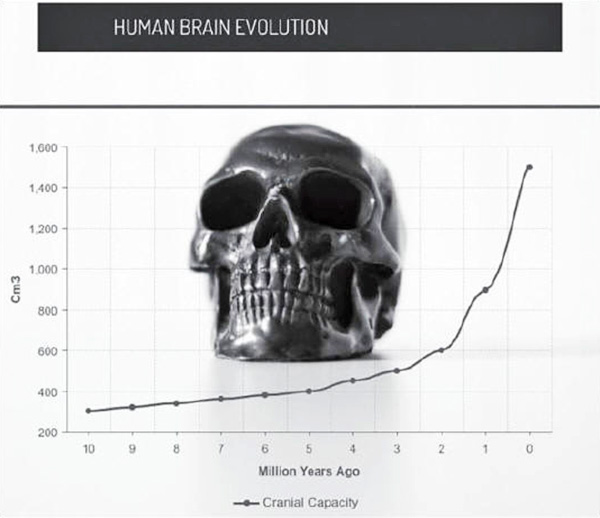|
by Bruce R. Fenton
and Daniella Fenton Extracted from 'Exogenesis Hybrid Humans'
Information sent by
Bazook 894
a human from a chimp-human ancestor is not to speed the ticking of the molecular clock as a whole. Rather the secret is to have rapid change occur in sites where those changes make an important difference
in an organism's
functioning. biostatistician
Davies considers this an intriguing but remote possibility that's well worth exploring. I consider such a genomic alien signature to be a demonstrable fact.
How could such evidence be missed by academics and left for discovery by me, a mere information technology professional, even if one fanatically researching evolutionary biology and ancient mysteries?
This last point may seem a little bit peculiar, but it is incredibly relevant.
Their research argues that the preoccupation with extraterrestrial radio signals might be a complete distraction from the more likely phenomena associated with advanced alien life.
The University of Cádiz team suggests that rather than radio signals, an alien intelligence might be manifesting itself in dimensions that usually escape our perception,
This echoes the opinions of some academics that suggest extraordinarily advanced aliens may also manifest as the laws of physics. The two psychologists ran a series of experiments to better understand how perception is limited by personal cognition and expectations.
The findings from the trials offered a startling result:
Even more alarming was that those persons who fared the worst were those with a tendency toward logical, right-brained thinking, which is common among academics.
De la Torre explained:
In short summary, a team of right-brained scientists is the least likely group to spot a glaring anomaly in the data.
It should be expected that a left-brained outsider, busy reviewing the same material, is more likely to notice something unusual.
He expects that the person will discover a persistent data anomaly,
The signature for genetic engineering of our hominin ancestors is a complex subject.
This is because there is not one single change that was carried out but quite a considerable number of modifications to different parts of the genome.
The reason for the difficulty is that DNA undergoes changes and mutations - some random and others through heritable epigenetic feedback loops.
After even one million years the traces of any genetic engineering might become extremely hard to identify.
If you want a signature to remain in DNA, or a fully fledged message, it needs to be encoded in regions of the genome that are extremely stable.
The code that changes the least is generally the most important for essential basic functions of an organism. Scientists refer to these elements of code as highly conserved or even ultra-conserved.
Most of the highly conserved genetic material is in noncoding DNA regions (once called junk DNA). It is possible for some sequences of DNA letters to remain stable over many tens of millions of years.
This is the only way to be relatively certain that the encoded message would be passed down until life reached sufficiently high complexity to access the message.
Keep in mind that any DNA that is not useful to the organism is almost certain to mutate. 3
If we were to simply look at these two wildly divergent species, we would assume the answer to our question is not much.
Moving below the level of form, you might be surprised to find chimps and chickens share some almost identical regions of DNA. One of these overlapping segments of code consists of 118 letters and differs by just two letters between these species.
Two letters have mutated in species separated by three hundred million years of divergent evolution. Talk about stability...
From what has been unraveled so far by geneticists, it seems this segment - designated HAR1 - plays a role in the development of the pattern and layout in the cerebral cortex.
This is the folded gray matter understood to play a pivotal role in human consciousness.
Let's just keep in mind that until hominins parted ways from the ancestors of chimpanzees, the rate of successful mutations in HAR1 was a single letter per 150 million years.
This means that, in almost all cases where a natural copying error occurred, the impact was so severe that the affected offspring either died in utero or was so severely handicapped it failed to successfully reproduce.
Yet, here we are with eighteen successful "mutations" in a fraction of that vast timescale, some arising just in the last few hundred thousand years.
According to biostatistician Katherine Pollard, PhD, of the Gladstone Institute,
What, then, could possibly bring about eighteen successful
modifications to such a stable region of code, in fewer than six
million years? You are probably wondering what the academic view is on how known evolutionary mechanisms could bring about such a radical change.
The best person to ask is the discoverer of these poorly understood human accelerated regions (HARs), Pollard, who says,
Pollard knows how to crunch the numbers:
There is nothing among known evolutionary mechanisms and environmental forces that would bring about such drastic changes without killing the organism.
As we have discussed, the stability of these areas is essential to survival.
While the vast majority of HARs remain entirely mysterious in function, it's understood that most of them tend to modify the development of the fetus.
The majority of these
regions are not inside genes but the switches that control gene
expression (modifying the degree of expression or turning the genes
on and off).
Chart depicts cranial expansion in line with body size and anomalous acceleration separate from body size changes
after 800,000 years ago until present.
Astonishingly, and beyond any reasonable coincidence, more than half of the genes located near HARs are involved in brain development and functioning.
This is not a random scattering of sporadic mutations found distributed across the genome - not at all.
Though HAR research is in the early stages, I am expecting to find a close correlation with the brain size acceleration events.
It became evident that without all the advanced technologies onboard the mothership they could not survive for very long in the hostile environment.
The group discussed how to move forward.
Eventually, they decided that the best direction would be to accelerate the evolution of the resident hominins and nudge them in a preferred direction.
One of the sets of past life memories involved the individual recalling events from the perspective of one of the "enemy" beings that had switched sides:
It should be mentioned here that, the earth hominins had purportedly been engineered from more primitive primates long before the arrival of the mission from the Pleiades.
In other circumstances, the benevolent entities would perhaps not have interfered with the development of an indigenous species, knowing the profound impact this would have on their progression.
In the situation of the upstanding ape, this creature had itself already been artificially engineered.
The hominins had lived in the presence of an alien race since their beginning. Under these circumstances, there was no guiding principle broken by taking direct action and modifying the creature's future potential.
With only limited medical and technological equipment, it was by no means easy. The engineering involved modifications at the genomic level as well as splicing of genetic material from other species, including the star people themselves.
Some of the alien volunteers had a reproductive system rather closer to that of marsupials than mammals.
This experimental process took time to perfect, and in some, heart-breaking failures are described.
Valerie writes:
This is without a doubt the most essential aspect of Alcheringa's downloads that we have been able to validate.
It's confirmation that humans have direct ancestry to both ancestral primates and advanced alien genetic engineers. The first ancestor of our Homo sapiens lineage was a hybrid creature resulting from an alien intervention.
This ancestry makes us a unique organism on this planet, even when considering that all life here began with alien-seeded DNA.
With this claimed uniqueness in mind, we should not be surprised that there are notable and anomalous differences separating us from our closest primate relatives.
To the best of my knowledge, no such sample exists - unless it is in some deep black project somewhere.
We could also identify a sudden anomalous addition if we compared Homo sapiens' DNA samples with those from hominins living eight hundred thousand years ago or more.
Unfortunately, the oldest human DNA recovered is just 430,000 years old.
Ludovic Orlando, PhD, is one of the evolutionary geneticists that sampled the ancient horse DNA.
Orlando believes that if fossils are well preserved by cold conditions, we might successfully sequence genomes from samples up to 1.5 million years old. 8
Part of the evolutionary process involves mutations occurring and accruing over time until new species diverge. It takes considerable time for evolution to create new forms.
This is the case:
Biologists place our split from the common ancestor shared with chimps at five or six million years ago.
We would expect these levels to be very much alike.
All living humans have virtually identical DNA, differing by only 0.1 percent. Our closest living genetic relatives, the chimpanzees, have about 1.2 percent variation in their genomes.
This is an oddity:
The absence of those significant intragroup differences is our first confirmation that Homo sapiens have a strange emergence story.
The
low level of genetic diversity suggests that our ancestors were
members of a small isolated group that emerged within the last one
million years.
We should quickly explore evidence that at least one group of early hominins reached Australia sufficiently early for this initial encounter. Although the aliens had their small saucer craft, there is no mention of having to collect humans from elsewhere.
Recent archaeology has confirmed that early hominins including Homo erectus and the small, hairy Homo floresiensis were moving through the Indonesian islands by one million years ago. 10
It is logical that after crossing the Wallace Line, the geological divide between mainland Asia and Australasia, these hominins should have ended up in Australia.
Evidence supportive of just such a migration has been identified in modern human DNA.
A recent study has determined that our ancestors lost almost half their biological diversity about 1.2 million years ago, give or take three hundred thousand years. 11
Mainly, any small human population isolated in a new land with an entirely novel ecology would be under unique evolutionary pressures. Beneficial changes in the genetic profile would also spread rapidly and be conserved.
To understand this, we need to look at some very recent findings.
This ancient DNA allowed them to calculate when these three human subspecies last shared a last common ancestor (LCA).
Several years before the University of Utah team came to this early divergence date, a team from the Lawrence Berkeley National Laboratory traced one specific Neanderthal gene's evolutionary history.
The team found that the genomic sequence had shared a most recent common ancestor with the reference modern human sequence approximately 770,000 years ago. 13
We can now see that,
The next step in this analysis involves considering some of the specific differences that separate us from chimpanzees.
I am not talking about the noticeable physical differences - morphology - here.
We will talk about those later...
Right now, we want to see if there is anything else strange lurking in our genetic makeup.
References
|




